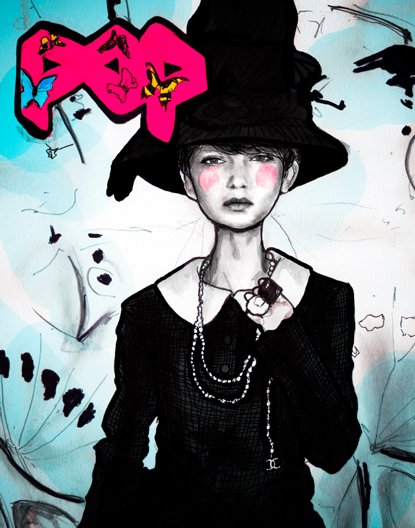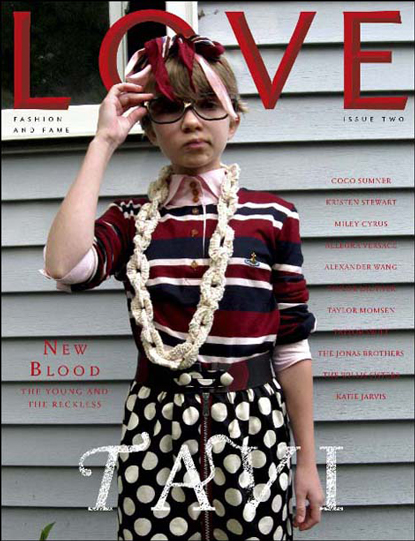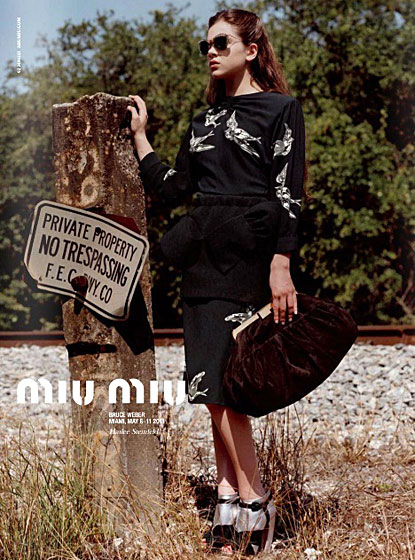.
The Editorial: Fashion Kids
Fashion is a canvas for wild experimentation. It is the single most tangible cultural lever by which we move forward in our relationship to the world. And in relation to ourselves and one another. Fashion is a harbinger of change, a powerful barometer of society’s mood, and a temporal definition of taste. Despite its seasonal direction changes, fashion opens the world progressively, and in a remarkably structured way. Compare the brilliant men’s collections we saw in Paris and Milan this season to the uniforms of the Mad Men era, or even Wall Street’s extroverted reign over the 1980s, and it becomes clear how drastically men’s role in society has evolved. Everyone’s role in society has evolved drastically. But, kids?

It goes without saying that fashion exists to break rules. We need fashion to fill that function. But as product design, architecture and other related worlds have progressed from styling-for-profit-driving to bastions of good ethics, fashion has stayed behind in several places it should be well ahead of the curve. Sweatshop labour abounds even today, fast fashion is raising serious issues of waste, and even the most prestigious labels can be less than forthcoming about their production practices. These are all, of course functions of the fierce competition brought on by globalisation.
But in terms of fashion as a cultural force, the role of children has become a tenuous one. Not kids in sweatshops (although they are certainly a far more serious problem), but the junior fashionistas and talented young personalities who are capitalised upon by fashion for their recognizability and youth. The awkward and bespectacled mini-savant Tavi is, of course, the epitome. A few years after her she gained notoriety through her very well-written blog (she’s now 15 years old), she has become a full-fledged force unto herself (her “press” person once brusquely blew me off). And much to the chagrin of several of her (much) older colleagues, she has been snapped up by the industry as a sage and muse. But, did she ever have a childhood? She certainly didn’t have a long one. But her age creates buzz. She sells magazines. She’s good business.

Prada has just made Hailee Steinfeld the new face of Miu Miu, and instantly at 14, she’s to become a full-fledged icon of her time. Now, exploited is certainly too harsh a word: these kids are anything but mistreated. They’re swathed in lavish outfits and marched around like the mini superstars they are. But the whole song and dance seems suspiciously like a highly calculated ploy in which marketers (and not designers) are grasping at anything out-of-the-ordinary for leverage in their brand-building wars. It’s like, “Flat, curvy, ethnic, strange, plain, ugly and extreme have all been done. So… um… how about kids?”
The problem is, using a kid as a marketing tool is slippery slope. Parents react strongly. And marketing tools, by nature, are designed to compel certain behaviours. Namely, consumption, adoration, reverence. What happens to the kids’ peers and their distorted worldview? Entirely separate from the wrongheaded Puritan diatribes about skinny models driving eating disorders and body image problems (that’s like saying advertising delicious food causes obesity, shitheads), throwing a kid into a mix changes the playing field. Tavi’s smart. Hailee’s a brilliant actress. Both are prodigies. But a prodigy in music or mathematics and a prodigy as marketing tool are drastically different. And precisely because fashion is a manifestation of our deep social and cultural conscious, maybe we should think a bit harder about what our new obsession means.

Maybe it’s just an uncomfortable inversion of the system. Maybe the beauty of youth is just too beautiful to ignore. Maybe we’re opening doors for new forms of expressions in fashion. But even in fashion, where most things should never be off-limits, there should be some room for the sacred. Maybe we should just let the kids be kids.
Tag Christof – Images courtesy Pop, Love and Miu Miu
